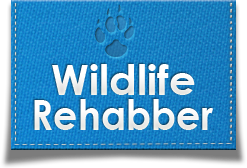Functions Symptoms (Bird and Mammal) Vitamin A: Growth, alimentary tract and respiratory mucosa Ruffled feathers, inflamed eyes, bulging and watery eyes, muscle incoordination, roughened coat, cloudiness of the cornea, nasal discharge, Vitamin B1: Carbohydrate metabolism, nerve or neuro-muscular impluse transmission Anorexia, weakness, diarrhea, lethargy, seizures and other neurological disorders, weight loss, leg weakness, ruffled … Continue Reading
Metabolic bone disease, or MBD, is a preventable problem that can occur in animals we rehabilitate. MBD has also been seen in wild animals with no prior human contact, though this is rare. A knowledge of this condition, and it’s causes, can help us care properly for those species particularly at risk. MBD is most … Continue Reading
Vitamin A: liver, eggs, fish liver oils Vitamin B1: brewers yeast, grains, molasses, meats, poultry, fish, eggs Vitamin B2: Brewers yeast, molasses, eggs Vitamin B6: Meats, yeast, molasses, wheat germ, green vegetables Vitamin B12: fish, eggs Biotin: egg yolks, liver, brewers yeast, whole grains Choline: egg yolks, brewers yeast, wheat germ, soy beans, fish Folic … Continue Reading
Click Here if you need to convert a weight Animal’s Weight X Dosage Amount ÷ Strength of Medication = Amount to Administer (in grams) (mg per kg) (mg per cc) **The Dosage Calculator is provided for use at your own risk.
If the bird is not a pigeon, you can report your finding and possibly receive some information on its history by visiting the Patuxent Wildlife Research Center Bird Banding Laboratory For pigeons, you will need to use the letters and numbers on the band to know whom to contact. For example if the band reads: … Continue Reading
Stabilizing/Transport/Emergency Information Once you have determined that this wild bird or mammal needs help, you should confine the bird or mammal and immediately contact a wildlife rehabilitator by phone. Your personal safety should always be a key factor. Always take appropriate measures to prevent personal injury from bites or coming in contact with saliva or other … Continue Reading
UPDATE: An interactive tool is now available by visiting Found A Baby Bunny? Online Assessment Tool Thank you for intervening on behalf of this baby. The fact that you have taken the first step will help ensure that this baby may have an opportunity to survive. Like you, wildlife rehabilitators volunteer to help wildlife … Continue Reading
If you want to raise an orphaned baby bird or mammal: First and foremost, understand that you must have state and federal permits to temporarily possess and care for any and all wildlife. Wildlife rehabilitators are permitted, unpaid volunteers who undergo inspections and receive annual training to temporarily care for orphaned and injured wildlife. They … Continue Reading
Update: Visit our NEW Found A Baby Squirrel? Online Assessment Tool Thank you for intervening on behalf of this baby. The fact that you have taken the first step will help ensure that this baby may have an opportunity to survive. Like you, wildlife rehabilitators volunteer to help wildlife when assistance would not normally be … Continue Reading
Thank you for intervening on behalf of this baby. The fact that you have taken the first step will help ensure that this baby may have an opportunity to survive. Like you, wildlife rehabilitators volunteer to help wildlife when assistance would not normally be available. Ducklings may be orphaned for many reasons: Late hatching … Continue Reading
Deer typically become a nuisance when they begin foraging on ornamental plants, shrubs, trees and crops. This activity becomes more noticeable when there is a reduced availability of natural foods (such as during a hard winter), and when there is a large deer population (resulting in a higher competition for available food). Deer prefer to … Continue Reading
